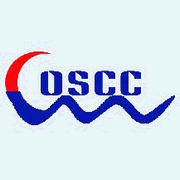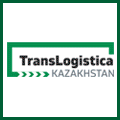MARSEILLES shipping giant, CMA CGM, has raised Asia-Europe westbound rates for shipments from all Asian ports to all European destinations and North Africa by US$408 per TEU and $806 per FEU effective April 1.
The breakdown of the total increase includes the existing interim fuel surcharge of $550 per TEU will be increased by $30 per TEU. The Aden Gulf surcharge of $54 per TEU will be reinstated, the Suez Canal surcharge will be increased to $14 per TEU, the container security fee of $10 per container will be reinstated and an emergency revenue increase of $300 per TEU will be added on top of all quotations.
Meanwhile, CMA CGM also said it will increase eastbound north Europe-Asia rates by $100 per TEU from March 19, applying to dry and low value commodity cargo.
The world's two largest carriers Maersk and MSC has announced the similar April rate increases earlier, and it is believed that most carriers will follow this second round of general rate increases (GRI) after the successful action of GRI in March.
Source Shipping Gazette - Daily Shipping News
IN the second MSC ship accident since the MSC Rena ran aground off New Zealand in October, the MSC-operated 4,437-TEU Carole has run aground on a reef off Jakarta, where it remains after unsuccessful attempts to refloat it.
Slot buyer APL issued a statement to customers: "Maersk Line has advised that all crew members are safe and no oil spillage has been observed. The extent of damage to the vessel and/or cargo has not yet been ascertained."
Confusion arose as the MSC ship was deployed on a Maersk Line service under a vessel sharing agreement, reported Lloyd's List, adding that Maersk has since said its responsibility extended to container stowage, not navigation.
APL notice to customers said: "Your cargo is on board the vessel. Unfortunately, this incident is likely to delay delivery. We will keep you informed once we receive further updates."
The February 27 grounding follows several MSC containership accidents in recent years, starting with the loss of the 4,688-TEU MSC Napoli in the English Channel in 2007, followed by the collision of the 2,314-TEU MSC Chitra with a 33,113-ton bulk carrier in 2010 on the Hoogly River channel into Calcutta, and last October's loss of the MSC 3,037-TEU Rena off New Zealand's North Island.
Source Shipping Gazette - Daily Shipping News
HONG KONG's Orient Overseas Container Line (OOCL) has announced it will increase the rates on its southeast Asia-Australia services by US$200 per TEU with effect from April 1.
The increase is applicable to shipments from Singapore, Malaysia, Thailand, Indonesia, Vietnam, Cambodia, Philippines, Indian subcontinent and Middle East to Australia, according to a company statement.
Source Shipping Gazette - Daily Shipping News
SYDNEY's Port Botany container throughput rose in January by two per cent compared to the same period 2011 with imports leading at 85,700 TEU and full year volume up by two per cent to 621,000 TEU year on year.
The port in the process of privatisation has recorded containerised exports of 33,870 TEU for the month of January and year-to-date of 266,770 TEU close to 2010 figures. Leading export commodities were cereals, machinery and transport equipment and chemicals, representing 31 per cent of total exports.
Import commodities were manufactures, machinery, transport equipment and chemicals. Of the imported machinery and transport equipment, motor vehicle parts and accessories, agricultural and industrial machinery and equipment as well as electrical and non-electrical equipment were included.
"Combined, these commodities represent over 57 per cent of total full containerised imports," said Sydney Ports CEO Grant Gilfillan, according to Sydney's Transport & Logistics News. Forty-four per cent of imports came from the Far East, Europe at 17.1 per cent accounting for 62 per cent of total container imports.
Source Shipping Gazette - Daily Shipping News
NEW JERSEY's SeaCube Container Leasing Ltd, which owns or manages 594,071 units or 933,499 TEU, posted a 27 per cent year-on-year net profit increase to US$44.1 million in 2011, drawn on revenues of $169.5 million, up 23 per cent.
Fourth quarter net profit was up 19 per cent year on year to $12.3 million, drawn on revenues of $46.7 million, up 30 per cent year on year.
Average utilisation was 98.1 per cent in the fourth quarter and 98.3 per cent for the full year, said the statement from New York-listed company, adding that it had invested $561.1 million in new equipment last year.
"During 2011, we more than doubled our container investments, enabling the company to significantly improve its revenue, earnings and cash flow. We have invested another $80.8 million during the first two months in 2012, of which 88 per cent has been committed to long term leases," said SeaCube CEO Joseph Kwok.
SeaCube is one of the world's largest container leasing companies based on total assets, said the company statement. The principal activities of SeaCube include the acquisition, leasing, re-leasing and subsequent sale of refrigerated and dry containers and generator sets, mostly on long-term contracts to the world's leading shipping lines. The company employs 75 in seven offices worldwide and has assets of $1.5 billion.
Source Shipping Gazette - Daily Shipping News
GUANGZHOU Port Group has signed a strategic cooperation heads of agreement with government of Maoming, a city in southwestern Guangdong province, on multiple port projects including building a 300,000-tonne terminal, Xinhua reports.
The two parties also agree on developing Maoming into a regional shipping and logistics hub for trade between hinterland China and ASEAN countries.
Maoming is speeding up the development of the 1,688-square-kilometre "New Coastal Area" approved by Guangdong province government. The area is planned to become the locomotive of local economy.
Maoming has ideal conditions for building deepwater ports and is well-developed in petro-chemical industry. The new port area it is now developing will be mainly for petroleum, gas, and containers.
Source Shipping Gazette - Daily Shipping News
HONG KONG's shipping line OOCL says it has switched terminals in New York and Le Havre for its upgraded Atlantic Express service (ATX) to use.
The carrier is using Global Terminal in New York instead of New York Container Terminal (NYCT), while its ships will in future dock at Generale de Manutention Portuaire (GMP) in Le Havre instead of Compagnie Nouvelle de Manutentions Portuaires (CNMP), it announced.
The first westbound sailing, following this move, is due to depart from Le Harve on March 3, and the OOCL California (voyage: 030W) is scheduled to arrive in New York on March 11. The first eastbound sailing will be made by the OOCL California, voyage 030E, departing from New York on March 12 and arriving in Le Havre on March 30.
Source Shipping Gazette - Daily Shipping News
THE low volume of goods to China from Bangladesh has resulted in the country's exporters losing out on a direct shipping service to China with the suspension first such link five months after it started.
"The ships which were coming from China directly to Bangladesh were going back with almost empty containers," said Rafiqul Islam, Bangladesh country representative of Singapore-based Pacific International Lines (PIL).
Each 1,200- to 1,500-TEU ship carried 400 - 500 TEU from China, only move 100 TEU on the backhaul, he said, adding that even a reduction in container rent from US$1,000 to $600 failed to boost business.
The service loss is also a blow to the Bangladeshi government, keen to boost exports to rein in a trade deficit that widened more than 25 per cent in the five months to November compared with a year earlier.
The direct link meant goods took between 12 and 15 days, saving nearly a week compared with other routes, which stopover in Singapore, reports Hong Kong's Asia Times. The blow to Bangladeshi exporters comes at a time when shipping companies are raising rates as fuel prices rise after incurring losses last year as international global trade growth slowed just when a large number of new vessels were coming into service.
"This is happening due to the global economic situation," said an official of one Singapore-based shipping company. "The demand for goods in the US and in Europe has reduced a lot and this is leading to severe losses for shippers, who are coming up with effective solutions to cut losses."
"During March, we will continue to carry cargo between Bangladesh and China through transhipment via Singapore. Three ships will carry containers from China to Singapore and then they will be brought to Chittagong port through a feeder service. This will take maximum 15 days, compared with 12 days with the direct route," said Mr Islam.
Source Shipping Gazette - Daily Shipping News
Mumbai's Jawaharlal Nehru Port Trust (JNPT) has received approval from the Indian shipping ministry to spend for INR15 billion (US$305 million) to widen the Mumbai Harbour Channel and terminal channel to accommodate bigger ships.
The widening of channels and dredging to 14 metres from today's 10 metres will allow the port to handle 6,000-TEU ships. The work will be completed within 25 months and is hoped to kick-start employment on the west coast of the subcontinent.
Source Shipping Gazette - Daily Shipping News
UNION Pacific Railroad chairman and and CEO James Young will take medical leave after being diagnosed with pancreatic cancer. He remains chairman of the board.
John Koraleski, executive vice president for marketing and sales, will serve as acting president and CEO during Mr Young's absence, said a company statement.
Steven Rogel, the company's lead independent director, said: "The board has a great deal of confidence in Jack, Rob Knight our CFO, Lance Fritz our head of operations, and the entire management team."
Omaha-based Union Pacific operates rail routes from all major US west coast and Gulf coast ports to eastern gateways, connects with Canada's rail systems and is the only railroad serving all six major Mexico gateways.
Source Shipping Gazette - Daily Shipping News
ASIA Pacific Maritime (APM) 2012 will take place at the Sands Expo and Convention Centre, Marina Bay Sands in Singapore as a three-day event to bring together world maritime leaders to discuss the outlook of the maritime industry globally and in Asia.
Industry hotspots such as offshore marine, bunkering, green shipping as well as a growing Asia will be the event's focus this year with the conference also covering ship finance, ballast water treatment and safety.
Maritime players will be able to gain insights on coping with what many forecast as an even tougher year ahead from people like Class NK chairman Noboru Ueda, also vice-chairman of the International Association of Classification Societies Ltd (IACS) Council.
International Chamber of Shipping (ICS) director Simon Bennett will co-host the APM keynote session themed Asian Shipping: Coping with Turbulent Waters.
Welcoming more than 1,300 leading international maritime companies from 53 countries and an expected 13,000 Asian visitors, APM 2012 will also showcase the latest innovation in marine engineering and port technology by leading maritime technology suppliers, equipment manufacturers and shipping company service providers offering technical and operational measures to cope with the current downturn.
Source Shipping Gazette - Daily Shipping News
OWING to a printing error, the timing of the Asia-West Africa Trade Agreement (AWATA) notice for a General Rate Increase (GRI) was said to apply on an incorrect date. The correct date is April 1, 2012.
On that date, April 1, 2012, there will be a GRI of US$250 per TEU on all westbound cargo between the Far East and West Africa. We apologise for any inconvenience AWATA members and their customers may have had resulting from our error published on February 29.
AWATA members are China Shipping Container Line, CMA CGM, Delmas, Gold Star Line, Maersk Line, Mitsui OSK Line, MSC, NileDutch, Pacific International Lines and Safmarine.
Source Shipping Gazette - Daily Shipping News
TAIWAN-based Evergreen Line plans to join a service between the US east coast and South America currently operated by NYK, Hanjin Shipping and Hyundai Merchant Marine, starting from March.
The carrier is making a return to the service after pulling out of a space sharing agreement on the same trade lane with Hamburg Sud in 2008 during the sharp downturn in shipping.
The shipping company continued its service between Asia and the east coast of South America during the downturn, reported American Shipper, so its re-entry will allow Evergreen to serve shippers on that route that also need to move cargo between South America and the US, said vice president Dominic Obrigkeit.
Evergreen will contribute one ship to the Atlantic North South service, as will Hanjin and Hyundai and NYK will contribute three. The six ships have capacity of about 2,100 TEU each and operate in the following rotation: Norfolk, New York, Savannah, Miami and Caucedo in the Dominican Republic, and then four ports in Brazil, namely, Santos, Navegantes, Rio De Janeiro and Vitoria before returning north to Caucedo and Norfolk.
Source Shipping Gazette - Daily Shipping News
CHINA Southern Airlines launched two ad-hoc cargo flights from Shanghai to Sydney in late February to try out the Shanghai-Australia cargo market, Xinhua reports.
In view of rapid growth of capacity on the Guangzhou-Australia line, China Southern has conducted an in-depth research on the Shanghai-Australia line potential before launching the two flights as preparation of breaking into the market.
At present, 90 per cent of the cargo bound for Sydney from Shanghai choose Sydney as their destination. Other destinations include Melbourne, Brisbane, Perth, Adelaide and Canberra.
Source Shipping Gazette - Daily Shipping News
ROYAL Jordanian Cargo is preparing to levy a surcharge from March 1 on customers to offset a carbon tax proposed by the European Union. However, the new EU fee is not expected to be introduced for another year.
According to India's Economic Times, there are concerns that the airline's plan may be adopted by the nation's air freight industry. Royal Jordanian currently operates in India mainly through Mumbai and Delhi.
However, such fears have been dismissed by Kapil Kaul, CEO South Asia of the Centre for Asia Pacific Aviation, saying, "Royal Jordanian does not have a significant presence in India. These are some isolated cases. And the fight is no longer an airline-versus-EU fight. It is countries versus the EU."
The move also comes in the wake of protests from governments in India, the US, China and Brazil over Europe's "insistence on making airlines flying to most of the continent pay for the carbon they emit," the report said.
"We have sent a communication saying that EU tax applies only from next year and why you are jumping into it now. They have not replied yet," said Asad Cassim, secretary general of the Air Cargo Agents Association of India. "According to one of the scenarios, others might follow suit. This will add to our cargo charges in an already slowing operating environment."
According to the report, the airline is proposing to implement a carbon surcharge of INR2.40 per kg from March 1, which would be a first in India.
Under the EU plan, airlines would be offered allowances to cover 85 per cent of their emissions. The calculations of carbon emissions are to start from January 2012. But the actual tax is to be implemented in 2013. Airlines that do not comply could face fines of US$130 for each tonne of carbon dioxide emitted for which they haven't surrendered the allowances. Persistent offenders could also face bans, the report added.
Source Shipping Gazette - Daily Shipping News
The magazine SEA has been published since 1935
International business magazine JŪRA MOPE SEA has been published since 1999
The first magazine in Eurasia in the four languages: English, Chinese, Russian and Lithuanian
|
|




.jpg)






